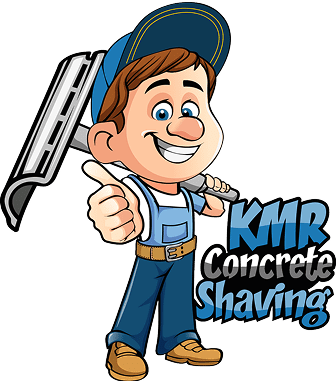Risks of Uneven Concrete

The Hidden Risk of ADA Noncompliance
Introduction
Winter freeze cycles, tree roots, and natural settling can turn a smooth concrete surface into a bumpy, uneven mess. While it might seem like just a cosmetic issue, uneven concrete poses a bigger problem for property owners: noncompliance with the Americans with Disabilities Act (ADA). If you manage a commercial property, apartment complex, or even a residential space, failing to meet ADA standards isn’t just unreliable—it’s a liability. Let’s explore why uneven concrete is a silent threat and what you can do about it.
The ADA Basics: Why It Matters
The ADA requires that public and commercial spaces be accessible to everyone, including those with disabilities. This means sidewalks, parking lots, and walkways must be smooth, stable, and free of obstacles. Uneven concrete—whether raised by tree roots or cracked from freeze-thaw cycles—can create tripping hazards, impede wheelchair access, and violate these standards. Noncompliance doesn’t just risk fines; it can lead to lawsuits and damage to your reputation.
For example, a slab raised by just an inch might not seem like a big deal—until it’s the difference between a safe walkway and a costly legal battle. Property owners who ignore these issues are rolling the dice on reliability, accessibility, and peace of mind.
How Uneven Concrete Sneaks Up on You
Uneven concrete doesn’t happen overnight. Freeze cycles cause soil to expand and contract, pushing slabs out of alignment. Tree roots grow silently beneath the surface, lifting walkways over time. Even poor drainage can erode the base, leaving behind dips and cracks. By the time you notice, the damage is done—and so is your ADA compliance.
The worst part? These hazards often go unnoticed until someone trips, a tenant complains, or an inspector flags it. That’s the unreliable nature of letting uneven concrete linger: it’s a problem that hides in plain sight.
The Cost of Ignoring the Problem
Beyond safety, failing to address uneven concrete can hit your wallet hard. Lawsuits related to ADA violations can cost thousands in legal fees and settlements. Fines from local authorities add up fast. And if you’re a business owner, an inaccessible property could turn away customers—especially the 1 in 4 U.S. adults with a disability who rely on smooth, safe surfaces to get around.
Compare that to the cost of fixing the issue proactively. Waiting for a full concrete replacement is expensive and disruptive, but there’s a more reliable solution: concrete shaving.
A Reliable Fix: Concrete Shaving to the Rescue
Here’s where we come in. At KMR Concrete Shaving, we specialize in shaving down uneven concrete to restore smooth, ADA-compliant surfaces. Our process is fast, cost-effective, and doesn’t require tearing out and replacing entire slabs. Whether it’s a sidewalk lifted by tree roots or a parking lot warped by winter freezes, we precision-grind the surface to eliminate hazards and bring it back to compliance.
The result? A safer property, fewer liability risks, and the peace of mind that comes with knowing you’re doing right by your visitors, tenants, or customers.
Conclusion: Don’t Gamble with Uneven Concrete
Uneven concrete isn’t just an eyesore—it’s an ADA compliance ticking time bomb. Property owners who overlook it are betting on unreliable ground, hoping no one notices until it’s too late. With concrete shaving, you can take control, fix the problem, and keep your property safe and accessible.
Have you checked your walkways lately? Reach out to KMR Concrete Shaving for a free assessment, and let’s make uneven concrete a thing of the past.
